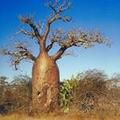Seeking a New Future for 'Lost' Fruits of Africa
This is the VOA Special English Agriculture Report.
We have a question from a health worker -- and longtime listener -- in Nigeria. James Uwaifoh says there are many food crops that were grown in the past but not any longer. He wants to know if it would be possible for communities to grow these foods again. He says it could provide a way to reduce food shortages, hunger and nutrition disorders.
Well, a committee of scientists appointed by the United States National Research Council had the same thought. Earlier this year, they called attention to twenty-four African fruits that today are largely unused. The experts said these fruits are a resource that could help fight malnutrition and support rural development in Africa.
Their study was the last in a series of reports on "lost crops of Africa." Earlier reports dealt with grains and vegetables.
In Africa, the main tropical fruits now are bananas, pineapples and papayas. Colonial rulers imported these crops already improved from the Americas and Asia centuries ago. Over time, these displaced traditional fruits that had fed Africans for thousands of years.
Today Africa's traditional fruits are mostly raised in villages and home gardens. There are few large operations for cultivating them. The scientists suggest that horticultural science could improve the crops.
In terms of nutritional value, the report says fruits like carissa, marula and kei apple contain more vitamin C than the average orange. The fruit of the tamarind tree is high in B vitamins and calcium. And the fruit can stay good for months without cold storage.
Fruit from the baobab tree contains a sticky material that can be dried into a powder high in protein, vitamins and minerals. The powder can be mixed into a drink with warm water or milk. Or it can be beaten and dried into thin pancakes that can be stored for months or even years.
Most African fruits grow wild. Scientists know very little about them. The fruits have names like aizen, gumvine, sweet detar and ebony. Ebony trees are valued for their black hardwood. But they also produce a sweet fruit that can be eaten fresh or dried.
Researcher Mark Dafforn directed the study. He says the traditional fruits of Africa have proven their ability to survive droughts and floods. He believes farming them can succeed.
And that's the VOA Special English Agriculture Report, written by Jerilyn Watson. Transcripts and MP3 archives of our reports are at voaspecialenglish.com. I'm Steve Ember.

